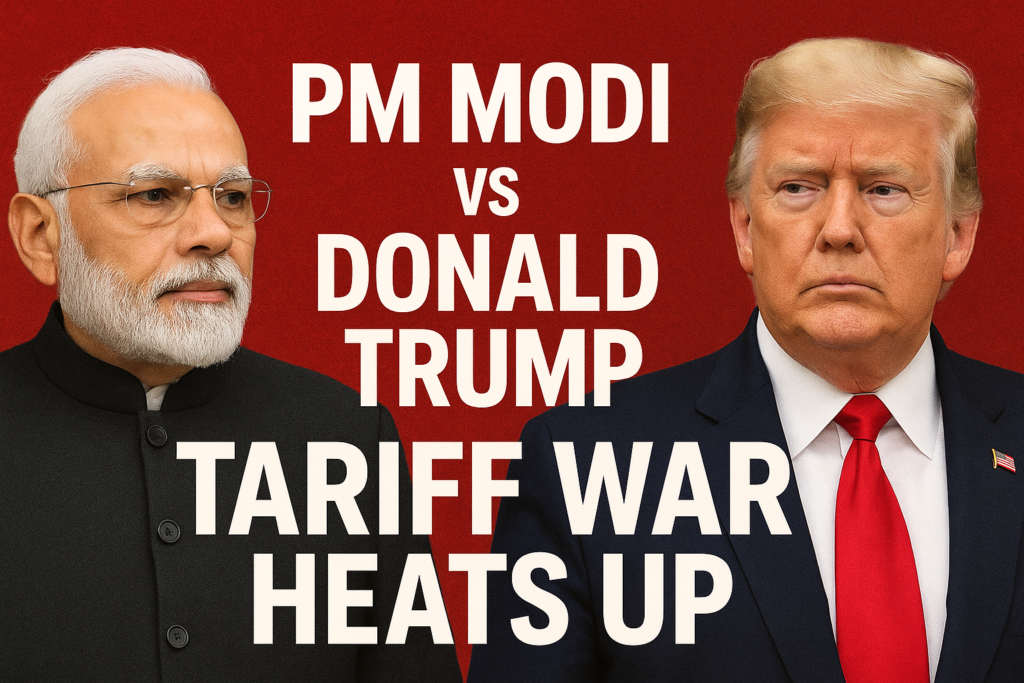Amid rising India-US trade tensions, PM Narendra Modi reportedly avoided four calls from Donald Trump as the U.S. imposed 50% tariffs on Indian goods. Learn why Modi stayed silent, how Trump reacted, and the economic fallout of this tariff war.
PM Modi Ignored Trump’s Calls: Inside the Tariff Tensions
A Silence That Speaks Volumes
According to reports from Germany’s Frankfurter Allgemeine Zeitung, Prime Minister Narendra Modi chose not to answer four separate phone calls from U.S. President Donald Trump. This was no technical error or scheduling mishap. Instead, it appeared to be a calculated pause—a diplomatic silence carrying its own weight.
While leaders often speak directly during moments of crisis, this time Modi seemed to let the unanswered rings themselves send a message of defiance.

Why Modi Turned Away
Not Indifference, But Strategy
Insiders suggest Modi’s decision stemmed from a mix of anger and restraint. The United States had just announced sweeping tariffs—up to 50% on Indian goods—and India saw this as an unfair blow. Ignoring Trump’s calls may have been Modi’s way of saying: “We won’t be pressured into submission.”
Trump’s Growing Frustration
Meanwhile, international outlets like Nikkei Asia noted that Trump grew increasingly irritated with the silence. For a leader who thrives on direct, fast communication, being met with a cold shoulder likely deepened the tension.
The Tariff Shockwave
What Triggered the Clash
The Trump administration slapped tariffs on India not just over trade disputes but also because of New Delhi’s continued purchase of discounted Russian oil. Washington saw this as undermining its global sanctions push, while India viewed it as a matter of energy security and national interest.
India’s Pushback
India did not mince words. Officials called the tariffs “unfair, unjustified, and unreasonable.” Modi himself pledged to protect farmers and small businesses—the backbone of India’s economy—no matter the international pressure.
The Economic Fallout
Sectors in the Crosshairs
The tariffs aren’t just numbers on paper. Economists warn that textiles, gems, jewelry, shrimp, and carpets—all major Indian exports—could face up to a 70% decline. That’s not just trade data; it’s millions of livelihoods on the line.
A Blow to Growth
Early estimates predict that India’s GDP could drop by nearly 1% if the tariff standoff continues. For a growing economy that relies heavily on exports, the damage could be severe.
Diplomatic Domino Effect
A Relationship at Risk
NATO advisor Krystle Kaul summed it up sharply: “It will set back relations between India and the U.S., which have taken so many decades to rebuild.”
For years, Modi and Trump projected an image of warmth—handshakes, rallies, and bold speeches. But now, the “Modi-Trump bromance” seems to be unraveling under the weight of tariffs and mistrust.
Talks at a Standstill
Negotiations between Washington and New Delhi have hit a dead end. Agricultural tariffs, energy deals, and questions over Russian oil imports remain unresolved. With every call unanswered, the trust deficit grows wider.
The Bigger Picture
What does all this mean? Modi’s refusal to pick up the phone wasn’t just about avoiding an awkward conversation. It was a symbolic stance, showing that India won’t bend under external pressure.
But symbols come with consequences. As tariffs bite deeper, and as Washington looks for leverage, the once strong U.S.-India partnership risks sliding into uncertainty.
One unanswered call can be ignored. Four? That’s a statement
